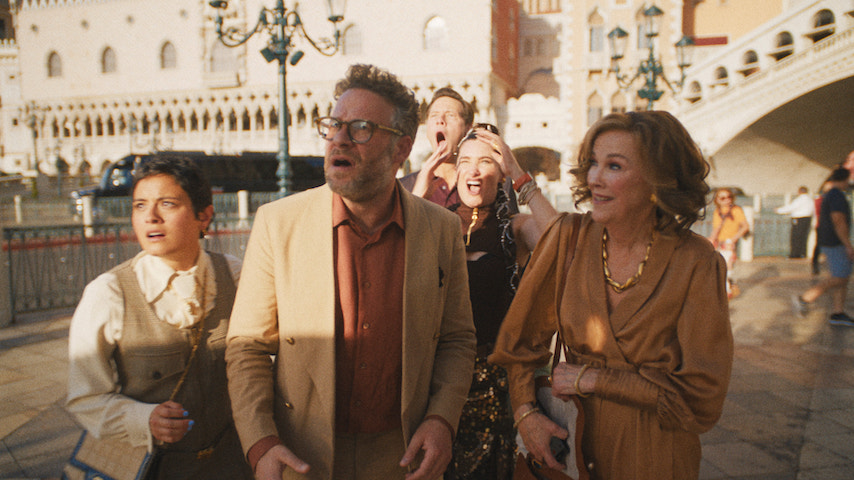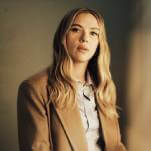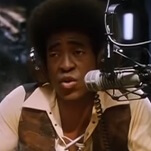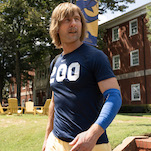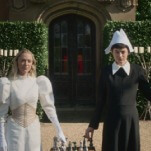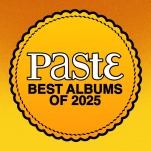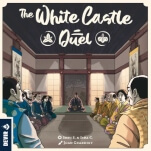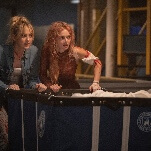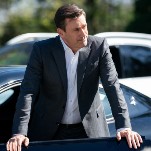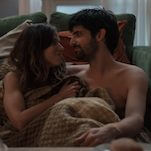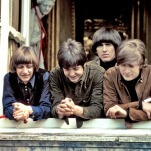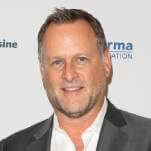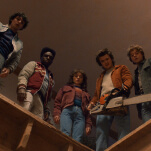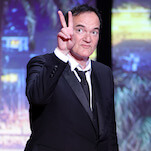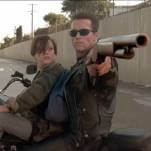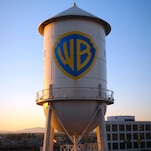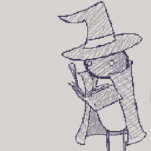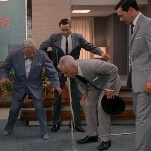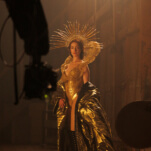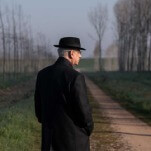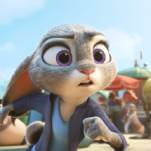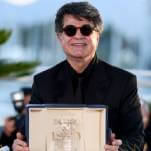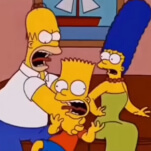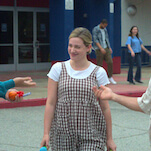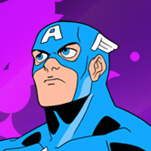The first season of The Studio ends with the superior second half of a two-part finale, which culminates in an insane CinemaCon presentation. The all-night bender of over-spiked shroom brownies leads to an event that plays into some of the themes of the show, most notably how close to absolute disaster the entire studio machine is every single day of its existence. Whether it’s disrupting the set of a Sarah Polley film, fighting with Ron Howard about his most personal film, almost sabotaging your film’s biggest night at the Golden Globes, or dosing your talent at a Vegas party, The Studio is about people barely avoiding complete destruction. They’re always leaning into the skid. That’s Hollywood: turning barely controlled chaos into box office gold for generations.
It’s also worth noting that The Studio cleverly lands in a place that might be meant to recall the greatest inspiration for its premiere: The Player. Not only did the season open with a set-touring oner that was clearly inspired by Altman’s film, but it includes a character with the same name as Tim Robbins’ put-upon protagonist. And where does The Player end? With Griffin Mill showing off the film-within-a-film that they’ve been working on the entire movie: a now-upbeat thriller called Habeas Corpus. Is it a coincidence that The Studio also builds to a showcase for a fake movie? Probably not.
“The Presentation” opens with Griffin Mill in a full-on freak-out, trying to go down on a statue in a fountain outside the Venetian. The only choice that Matt and his team have is to Weekend At Bernie’s the situation, walking around with the passed-out Griffin as if he’s totally fine. Is this arc too ridiculous if you think about it for a minute? Probably. Even if people think Griffin is in his sixties, they could get some sympathy by saying he’s in the hospital (and he probably should be), but Matt Remick never knows when to give up on a bad idea.
Griffin isn’t the only one they need onstage, and Zoë Kravitz is barely in better shape. They find her on a nightstand, convinced it’s too high to climb down. If that’s not bad enough, Dave Franco gets bloodied by gamblers who he swindles using some of his Now You See Me tricks. Griffin is barely alive, Zoë is still irresponsibly high, and Dave is a bloody mess. Time for a show!
And what a show it is. While this two-part episode isn’t The Studio at its best overall, it undeniably builds to an impressive sequence in its final scenes onstage at CinemaCon. First, Dave Franco slays as he pretends to be in character as his bad guy from Ron Howard’s Alphabet City, screaming that he needs urgent care as soon as he gets off stage. Zoë seems to be losing her mind as she riffs on topics like the fact that we’re all “skin sausages,” leading Patty to go out and vamp while she comes ever-so-slightly down. O’Hara is amazing as Patty rambles about her childhood, trying to remember the movie and actress that inspired her, leading to the best Mary Pickford joke in history. (It was really Lee Remick, a hysterical choice to inspire someone to make movies for a living in its own way too.)
After a trailer for The Silver Lake, Zoë totally destroys the Blackwing presentation before Nicholas Stoller comes out for Kool-Aid. It’s going to be time soon for Matt and Griffin to close the show. Matt’s speech is perfect for the theme of the event as he brings out the key players from the rest of the cast to talk about how much he loves them. Matt Remick desperately needs the approval and adoration of his colleagues. He wants to be friends as much as their boss, which can be nearly impossible, but it makes for an almost-tender final episode.
Of course, bringing everyone onstage means no one is there to watch Griffin, who drops from the ceiling in the Kool-Aid Man harness. He smashes onto the stage, dazed, before trying to read the teleprompter but only saying “movies.” Everyone starts to chant the word as the camera swoops around the theater, almost like it too is inspired by the vibe in the room. What more do you need to say? It’s all about the movies.
Where does the first season of The Studio stand compared to other Hollywood stories and in the current comedy landscape? There’s something inherently interesting in the idea that arguably the two best comedies on TV (this one and Hacks) are both about the industry. As how we watch film and television continues to shift in the 2020s, there are new veins of humor to mine in it. Although so much of what works about The Studio doesn’t feel like a prisoner of the moment. Some have argued it should take sharper aim at current topics du jour, but there’s a nice blend of modern references and nods to the classics here, everything from The Player to Weekend At Bernie’s.
The writing may be what truly elevates The Studio, but the show’s greatest strength could also be its casting. Rogen has never been better, blending his comic timing with an undercurrent of privileged insecurity that can only come from decades of being around people like Matt Remick. Similarly, Ike Barinholtz is fantastic here, and Chase Sui Wonders feels like a new star who will be around for a while. The veterans in Catherine O’Hara and Kathryn Hahn take deep bites out of their funniest scenes, while the guest stars should dominate that category at the Emmys.
Where does The Studio go from here? There’s little doubt that Rogen, Evan Goldberg, & co. have other stories to tell. After all, there are millions of them in the City of Angels. And it takes a studio for us to hear ’em.
Stray observations
- • Who’s your MVP?
- • Did Kathryn Hahn getting turned on by Matt’s threading the needle of disaster remind anyone else of her incredible work in Step Brothers?
- • The threat to Stoller that Kool-Aid 2 would be directed by Shawn Levy is a wonderful shot across the bow at one of the blander filmmakers in the industry. And Stoller to Levy is definitely the kind of sequel step down that would happen.
- • There are a couple references in this episode to films about people messed up on drugs and alcohol, including Patty’s love for Days Of Wine And Roses and the talk of using cocaine to get Griffin out of his drug-induced coma: “Flight his ass right into the presentation.” The writing on this show is constantly using film references that flavor the plotting of each episode. I love it.
- • The final song cue is wonderfully bonkers. It’s “There’s A Great Big Beautiful Tomorrow” from the Carousel of Progress, a ride at Walt Disney World’s Magic Kingdom. It’s a song written by geniuses (Richard M. Sherman and Robert B. Sherman) but it’s also a part of one of the peaks of modern capitalism, a place that turns Hollywood dreams into thrill rides. One of the verses feels like how Matt sees the world: “Man has a dream, and that’s the start / He follows his dream with mind and heart / And when it becomes a reality / It’s a dream come true for you and me.”
